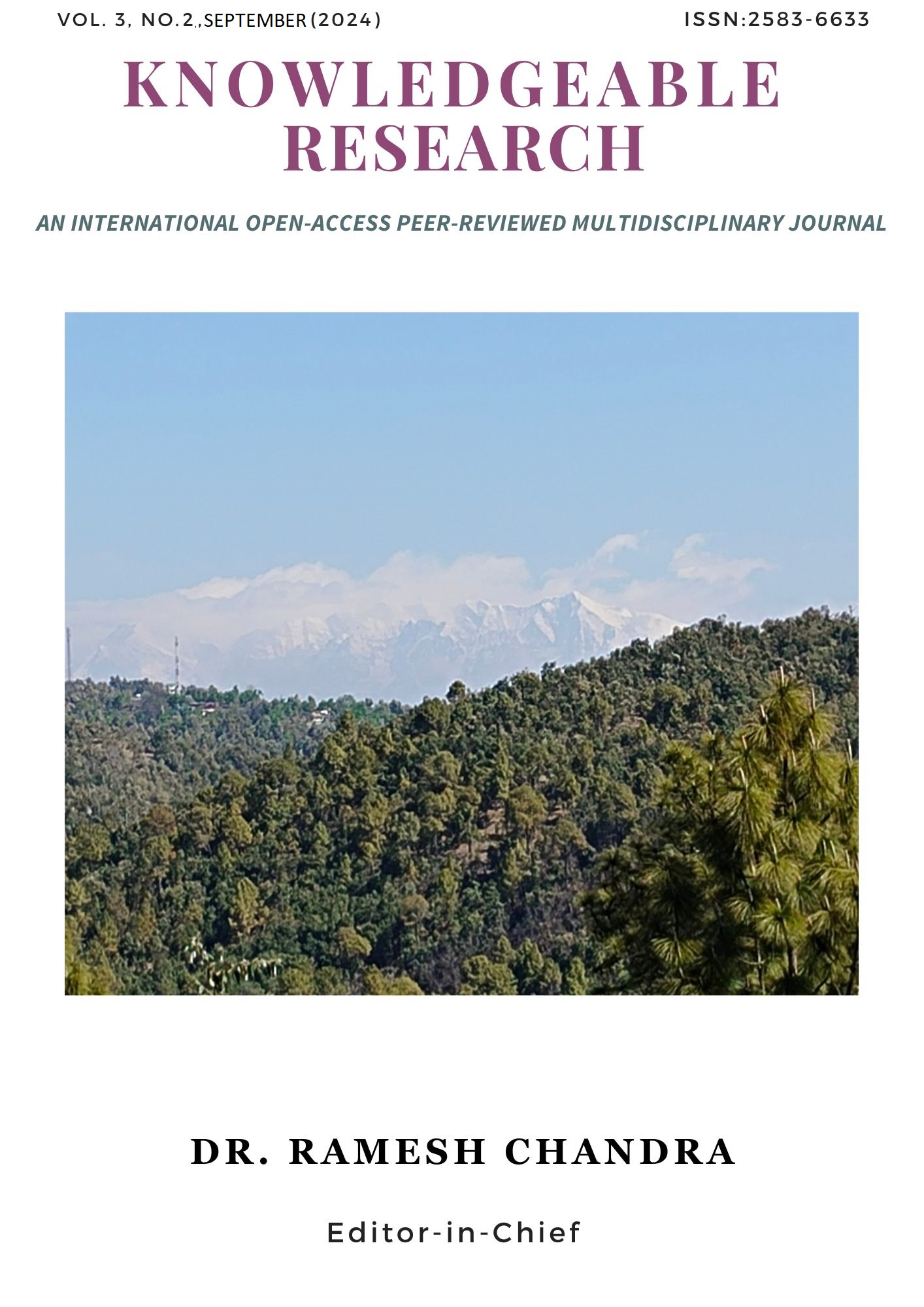Hindi novel and women's consciousness of the new decade
Main Article Content
Abstract
The Hindi novel has crossed many milestones and stages in its journey of emergence and development. Its development has seen numerous turning points, embracing them, confronting numerous obstacles, and embracing numerous beliefs. The vast flow of the Hindi novel has continued to expand like a mighty river. Perhaps the most significant turning point in this long journey of the novel is the emergence of the nineties. This period can be called the era of the changing conditions of the Indian public. From the perspective of middle-class consciousness, the nineties are a significant period in the history of the Hindi novel. The dreams that the common man had dreamed of the achievements of independence were shattered within a decade. What the common man, who dreamed of Ramrajya, found in the name of freedom was selfishness, exploitation, corruption, frustration, inferiority complex, and a long series of fears. Hindi novelists keenly felt this bitterness of the contemporary situation, and we hear its echoes in the novels of the nineties. The post-independence era marked a new turning point in the Hindi novel. The bleak freedom that the Indian people received created a distrust of values. A new generation of novelists intensely expressed these situations in their novels. The sentiments that had germinated in the sixth and seventh decades blossomed in the novels of the eighth decade, and by the ninth decade, a new novel had emerged, determined to confront political and social corruption. The novels of this decade not only depicted external situations but also delved into the uncharted depths of the human mind and offered a nuanced analysis of human behavior.
Article Details
Section

This work is licensed under a Creative Commons Attribution-NonCommercial 4.0 International License.

